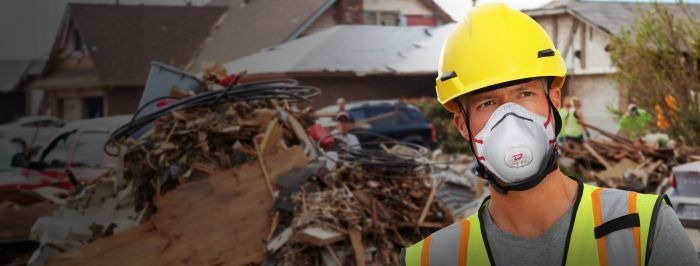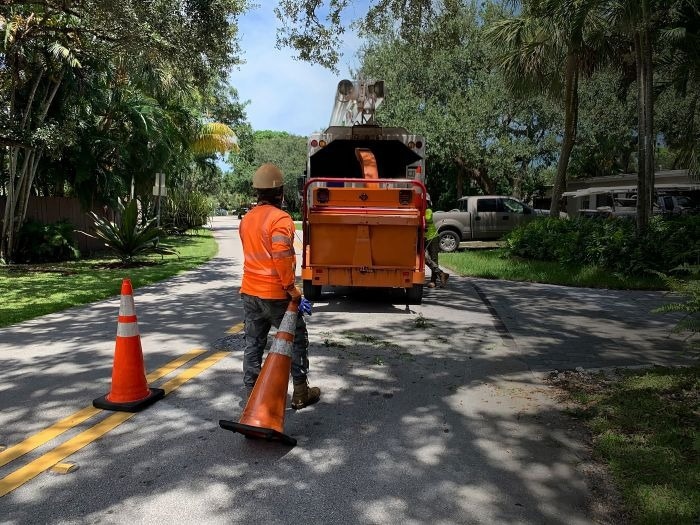When disaster strikes, rescue and recovery teams, along with civilian volunteers, are the first responders, often placing themselves in dangerous situations to save lives and restore order.
Whether addressing the aftermath of a hurricane, flood, earthquake, or man-made catastrophe, these individuals face extreme conditions laden with unpredictable hazards.
Personal protective equipment (PPE) is their primary defense, providing essential protection to ensure their safety during operations.
The Reality of Disasters: What are the Risks?
Disasters manifest in various forms, yet they all share a common characteristic: they result in chaos and destruction that can jeopardize lives long after the initial event.
The subsequent rescue and recovery efforts often unfold in environments rife with invisible and unpredictable dangers. From contaminated floodwaters to unstable rubble and toxic emissions, disaster zones are rarely secure.
While trained professionals typically lead these operations, community members and volunteers frequently offer support with the best intentions; however, they expose themselves to significant risks without adequate protection.
Each type of disaster, whether natural or man-made, presents its own distinct set of hazards. Below are some of the most prevalent disasters encountered in the United States and the associated dangers.
Hurricanes
Hurricanes bring high winds, torrential rains, and storm surges that can destroy buildings, flood streets, and scatter hazardous debris.
Hurricane Harvey, the most severe tropical cyclone in U.S. recorded history, along with Hurricanes Irma and Maria, recently reminded us of the destructive force these storms unleash on U.S. shores.
In addition to immediate threats such as flying debris and structural collapse, the aftermath of hurricanes often involves prolonged exposure to contaminated floodwaters and unstable structures.1
Flooding
Flooding can arise from tropical storms, hurricanes, or extended periods of heavy rainfall.
The Northeastern United States experienced significant flooding in 2023, with record-breaking rainfall in Vermont that mirrored the devastation caused by Hurricane Irene in 2011. These floods submerged entire towns, overwhelmed sewer systems, and created breeding grounds for mold, harmful bacteria, and hazardous chemicals.
Even after floodwaters recede, contaminated surfaces, unstable mud, and debris present dangerous conditions for cleanup crews and volunteers.2,3
Wildfires
Wildfires can devastate vast areas within hours, leaving behind smoldering landscapes and air filled with toxic smoke.
The 2023 Maui wildfires destroyed thousands of homes and resulted in over 100 fatalities. In addition, the 2025 Southern California wildfires marked one of the most destructive events in California’s history, inflicting damages exceeding $250 billion and claiming 27 lives.
In wildfire zones, the risks persist even after the flames are extinguished. Ash, smoldering embers, and damaged infrastructure threaten recovery teams and well-intentioned locals who venture in to assist.4,5
Key Risks and PPE Solutions
Volunteers and responders often underestimate hidden dangers such as toxic air, sharp debris, and precarious terrain in disaster zones.
Proper PPE prevents injuries and illnesses, enabling safer and more effective recovery efforts.

Image Credit: Protective Industrial Products, Inc.
Flood Waters and Hazardous Liquids
Risks: Exposure to chemicals, sewage, contaminants, and waste may result in skin irritations, infections, and respiratory issues.
Essential PPE:
- Disposable coveralls with a comprehensive barrier provide reliable protection, preventing direct skin contact with contaminants and hazardous substances. Thus, they ensure safety in environments where exposure to harmful elements is a concern.
- Chemical-resistant gloves safeguard hands from hazardous chemicals and biological contaminants.
- N95 masks or respirators minimize the risk of inhaling harmful mold or bacteria common in flood-affected areas.
- Steel-toe rubber boots offer puncture resistance from sharp debris submerged in water while providing traction against slip hazards.
- Earplugs help safeguard hearing in high-noise environments by providing a reliable barrier against harmful sound levels.
- Safety glasses and goggles protect eyes from dust, projectiles, and splashes.
Sharp, Pointed, and Abrasive Debris
Risks: Punctures, cuts, crush injuries, and abrasions from broken glass, wood, and metal.
Essential PPE:
- Cut-resistant gloves provide protection against sharp edges, reducing the risk of lacerations and puncture injuries during debris removal.
- Durable workwear with reinforced wear areas helps minimize the incidence of scrapes and abrasions during challenging recovery tasks and mitigates the impact of contact with rough surfaces.
- Hard hats and safety helmets protect against sharp, pointed and abrasive debris, which is essential during disaster relief operations where debris from collapsed structures and wreckage poses a significant threat.

Image Credit: Protective Industrial Products, Inc.
Live Electrical Hazards
Risks: Electrocution and burns from exposed wires, downed power lines and electrical equipment.
Essential PPE:
- Rubber-insulating gloves and sleeves protect hands from electrical shock when working near energized equipment or downed lines.
- Face shields provide additional eye and face protection from sparks or flying debris.
- Arc-rated apparel decreases the risk of severe burns from arc flash incidents, offering flame-resistant protection in high-risk electrical environments.
Rough and Cluttered Terrain
Risks: Falls, slips, trips, and physical strain from navigating rubble and unstable ground.
Essential PPE:
- Type II safety helmets offer critical protection from both top and lateral impacts, making them ideal for unstable environments with falling debris, low-hanging structures, or shifting materials.
- Hi-vis vests enhance visibility in low-light or chaotic environments, reducing the risk of accidents, especially in busy or crowded areas.
- Knee pads and ergonomic supports offer comfort and protection when kneeling on uneven or sharp surfaces, minimizing strain and potential injuries during extended tasks.
- Heavy-duty gloves with good grip improve tool handling and debris management, reducing the likelihood of slips while protecting rough surfaces.
Conclusions
Appropriate PPE enables disaster relief teams to operate confidently, safely, and effectively in unstable and hazardous environments. Beyond compliance, investing in proper protective gear ensures that each team member can return home safely.
References and Further Reading
- NOAA (2023). Hurricane Costs. (online) NOAA. Available at: https://coast.noaa.gov/states/fast-facts/hurricane-costs.html.
- US Department of Commerce, N. (2023). The Great Vermont Flood of 10-11 July 2023: Preliminary Meteorological Summary. (online) National Weather Service. Available at: https://www.weather.gov/btv/The-Great-Vermont-Flood-of-10-11-July-2023-Preliminary-Meteorological-Summary.
- Center for Disaster Philanthropy. (2023). 2023 Northeast US Floods. (online) Available at: https://disasterphilanthropy.org/disasters/2023-northeast-us-floods/.
- U.S. Fire Administration (2024). Preliminary After-Action Report: 2023 Maui Wildfire. (online) U.S. Fire Administration. Available at: https://www.usfa.fema.gov/blog/preliminary-after-action-report-2023-maui-wildfire/.
- Qiu, M., et al. (2025). The rising threats of wildland-urban interface fires in the era of climate change: The Los Angeles 2025 fires. The Innovation, p.100835. https://doi.org/10.1016/j.xinn.2025.100835.

This information has been sourced, reviewed and adapted from materials provided by Protective Industrial Products, Inc.
For more information on this source, please visit Protective Industrial Products, Inc.